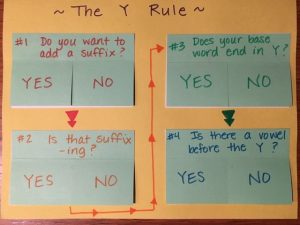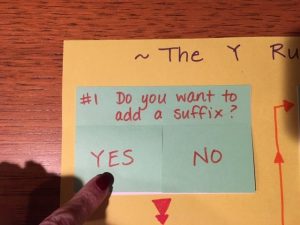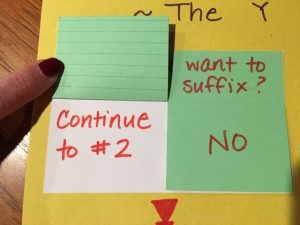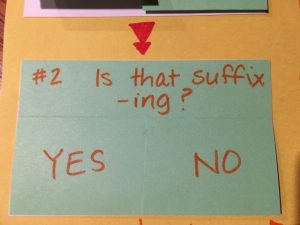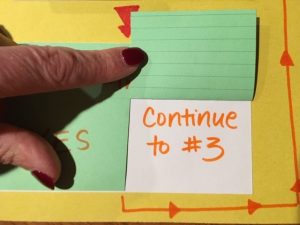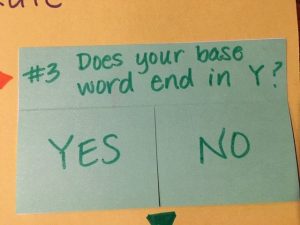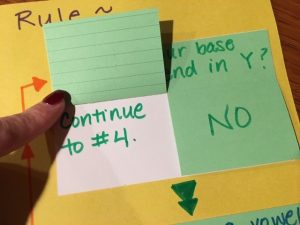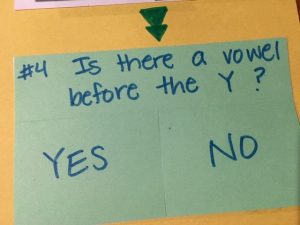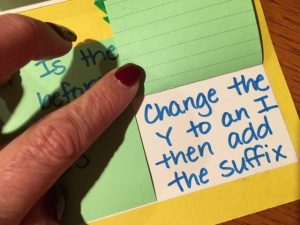The Y Plus Suffix Rule: Meaning, Words, & Multisensory Activity
Posted by Tammi Brandon on 11th Feb 2019
The Three Great Spelling Rules (The 1-1-1-v Doubling Rule, the Magic-E Plus Vowel Suffix Rule , and the Y Plus Suffix Rule) present difficulty to many students, often requiring additional practice sessions to truly master these rules. Teaching each rule in a multisensory manner is of critical importance. Teachers may use games, chants, and other manipulatives to help students develop automaticity with these advanced spelling concepts.
What is the Y Plus Suffix Rule?
The Y Plus Suffix Rule is a spelling guideline that explains what happens when a word ending in "y" is modified by adding a suffix. Specifically, the rule states:
- When a word ends in "y" preceded by a consonant, change the "y" to "i" before adding a suffix (e.g., happy → happier).
- When a word ends in "y" preceded by a vowel, keep the "y" and simply add the suffix (e.g., play → played).
The Y Plus Suffix Rule is essential for spelling consistency and helps students understand and predict how words will change when modified.
Exceptions to the Y Plus Suffix Rule
The Y Plus Suffix Rule is generally reliable, but there are exceptions that students need to be aware of to avoid errors:
Suffixes Beginning with "i": When adding a suffix that starts with "i," the "y" remains unchanged to prevent awkward double "i" combinations (e.g. “-ing”). For example:
- Try → trying
- Apply → applying
Words with a Vowel Before "y": If the letter before "y" is a vowel, the "y" does not change, regardless of the suffix. For example:
- Play → playing
- Joy → joyful
Teaching these exceptions alongside the Y Plus Suffix Rule helps students grasp the full scope of when and how the rule applies. Encourage practice through activities, like the one below, where students identify which words follow the rule.
Y Plus Suffix Rule Multisensory Activity
To help students learn and master the Y Rule, here is an activity that older students seem to enjoy. This activity is similar to a flow chart.
The teacher dictates a word, such as “cry” and asks the student to add a suffix to it. For our example word, let’s add the suffix -ed.
Using the chart, the student begins with question 1: Do you want to add a suffix?
To change “cry” to “cried”, we need to add a suffix, so the student lifts the flap with “yes” on it and follows the directions.
The student next answers question 2: Is the suffix -ing?
In our example word, we are adding -ed, so the answer is “no”. The student lifts the “no” flap and follows the directions.
The student answers the third question: Does your base word end in Y?
Again, the student answers the “yes” or “no” question and follows the directions. For “cry”, the student lifts the “yes” flap and follows the directions under the flap.
The student continues to the final question: Is there a vowel before the Y?
In our word “cry”, there is a consonant before the Y, so the student lifts the “no” flap.
Using this flow chart helps students to solidify their understanding of the Y Plus Suffix Rule.
Ready to Make Your Own Chart?
If you’re ready to create your chart for your student, follow these steps:
Question 1: Do you want to add a suffix?
Yes flap = Continue to #2.
No flap = The rule does not apply.
Question 2: Is that suffix -ing?
Yes flap = The rule does not apply.
No flap = Continue to #3.
Question 3: Does your base word end in Y?
Yes flap = Continue to #4.
No flap = The rule does not apply.
Question 4: Is there a vowel before the Y?
Yes flap = The rule does not apply.
No flap = Change the Y to and I then add the suffix.
Example Y Plus Suffix Rule Words
Here are some additional examples of the Y Plus Suffix Rule for future learning:
Change "y" to "i"
- Happy → happier
- Baby → babies
- Lazy → lazier
- Copy → copied
- Worry → worried
Keep the "y"
- Play → playing
- Enjoy → enjoyment
- Joy → joyful
- Stay → stayed
- Buy → buying
Written by Tammi Brandon, M.Ed., CDP
Tammi Brandon is a Master Instructor and Education Consultant with Brainspring Educator Academy.


